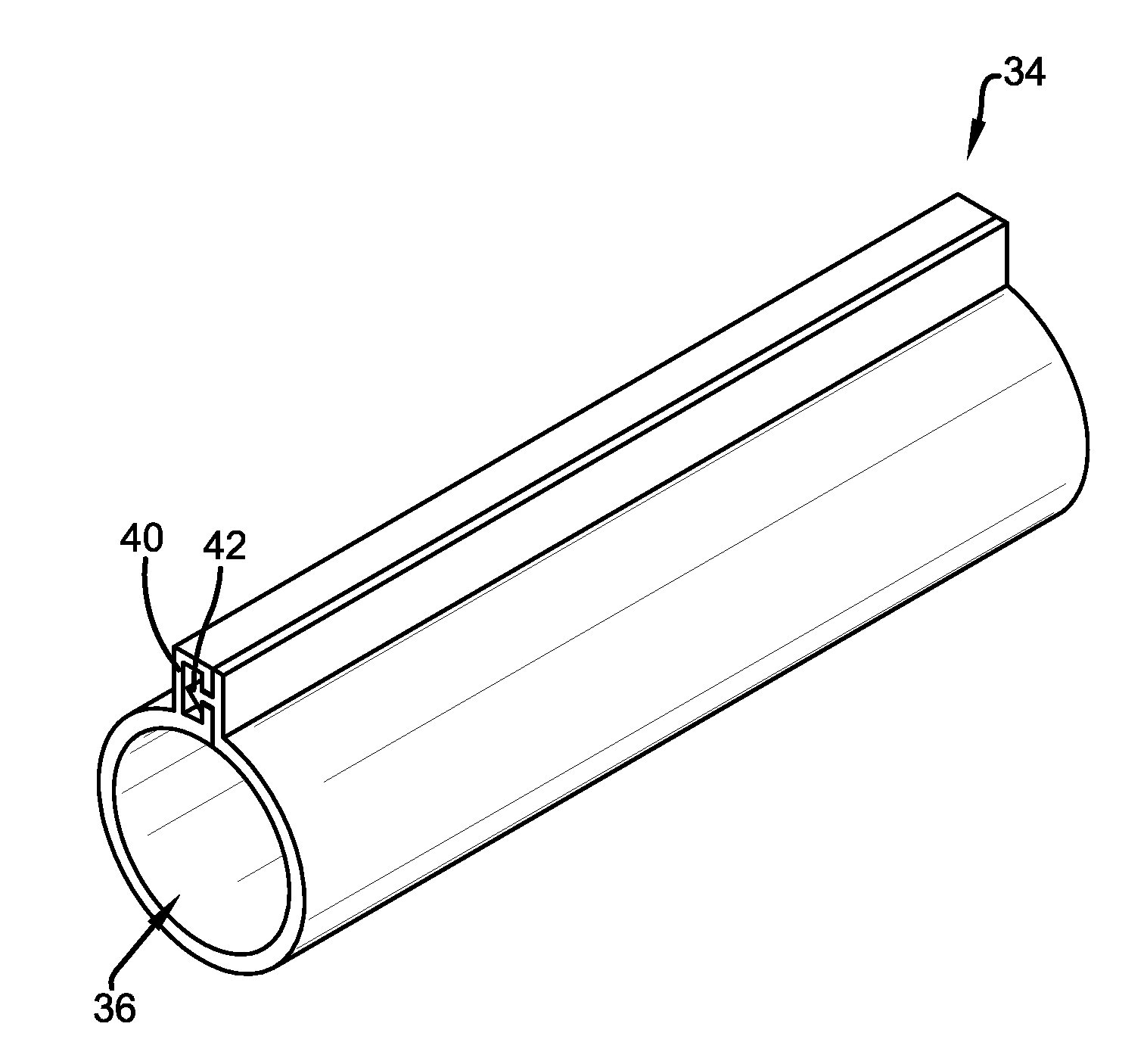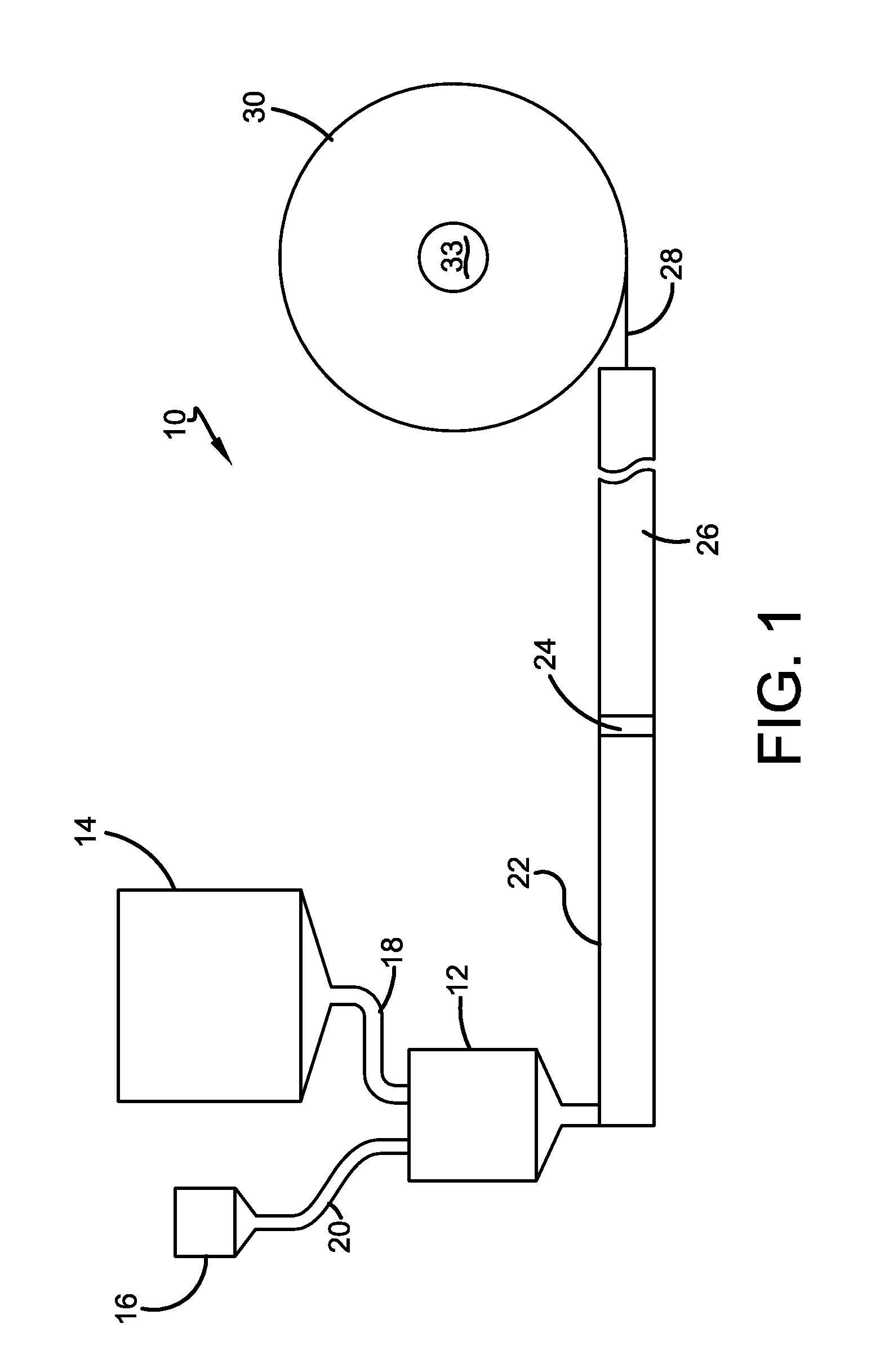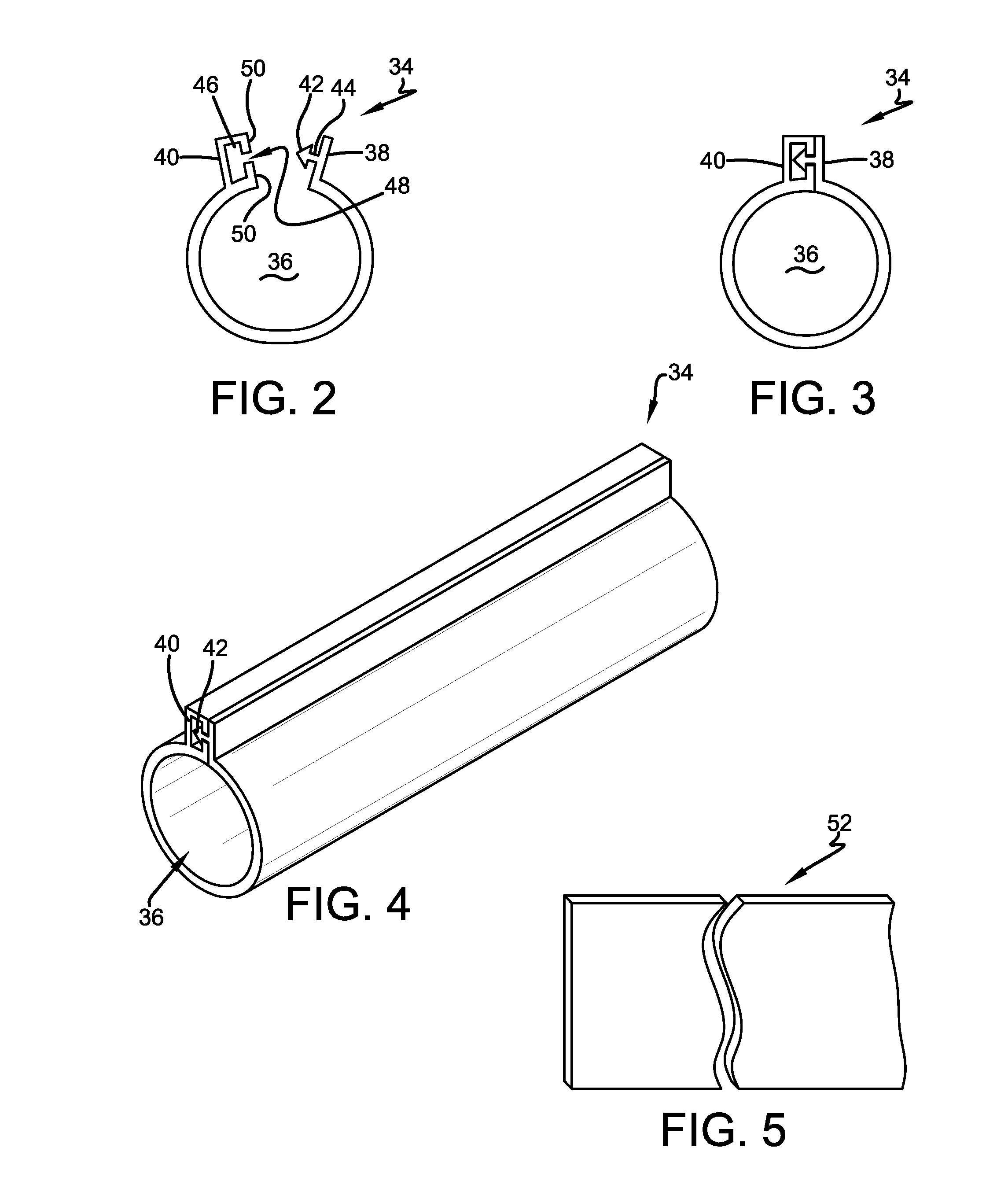Rodent Sleeve Guard for Cables and Method of Making Same
a technology of rodent sleeves and cables, applied in the direction of underground tube cable installation, pipe protection against damage/wear, electric cable installation, etc., can solve the problems of high cost, inconvenient for both individuals and businesses, and damage to wires and cables
- Summary
- Abstract
- Description
- Claims
- Application Information
AI Technical Summary
Benefits of technology
Problems solved by technology
Method used
Image
Examples
Embodiment Construction
[0025]Referring now to the drawings and more particularly FIG. 1, a system for making rodent sleeve guards in accordance with the invention is shown as designated by the numeral 10. As illustrated, a heated blender or mixer 12 communicates with a pair of hoppers 14, 16 and receives associated constituent components therefrom through dispensing lines 18, 20. According to a preferred embodiment of the invention, the hopper 14 receives pellets of a high-grade, thermoplastic elastomer (TPE) that is stabilized as to ultraviolet radiation. The hopper 16 receives an additive in the form of a nontoxic rodent repellent, again presented in pelletized form. Presently, it is contemplated that the rodent repellent may be that manufactured by C Tech Corporation of Surat, India, and described in a Material Data Safety Sheet as a quaternary ammonium compound in the family of carboxylic acids, esters, and organic compounds and characterized as having a processing temperature on the order of 120-180°...
PUM
 Login to View More
Login to View More Abstract
Description
Claims
Application Information
 Login to View More
Login to View More - R&D
- Intellectual Property
- Life Sciences
- Materials
- Tech Scout
- Unparalleled Data Quality
- Higher Quality Content
- 60% Fewer Hallucinations
Browse by: Latest US Patents, China's latest patents, Technical Efficacy Thesaurus, Application Domain, Technology Topic, Popular Technical Reports.
© 2025 PatSnap. All rights reserved.Legal|Privacy policy|Modern Slavery Act Transparency Statement|Sitemap|About US| Contact US: help@patsnap.com



